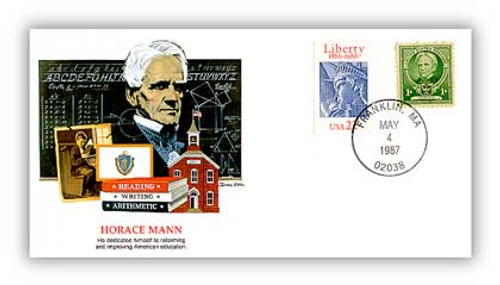
# 81877 - 1987 Clara Barton/Shapers of Am. Liberty
Birth Of Clara Barton
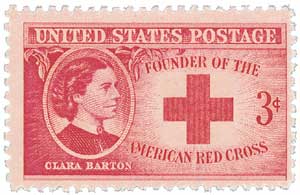
American Red Cross founder Clara Barton was born on December 25, 1821, in North Oxford, Massachusetts.
Barton’s father was a local militiaman who instilled in her a sense of patriotism and human interest. She attended school at the age of three where she excelled in reading and spelling.
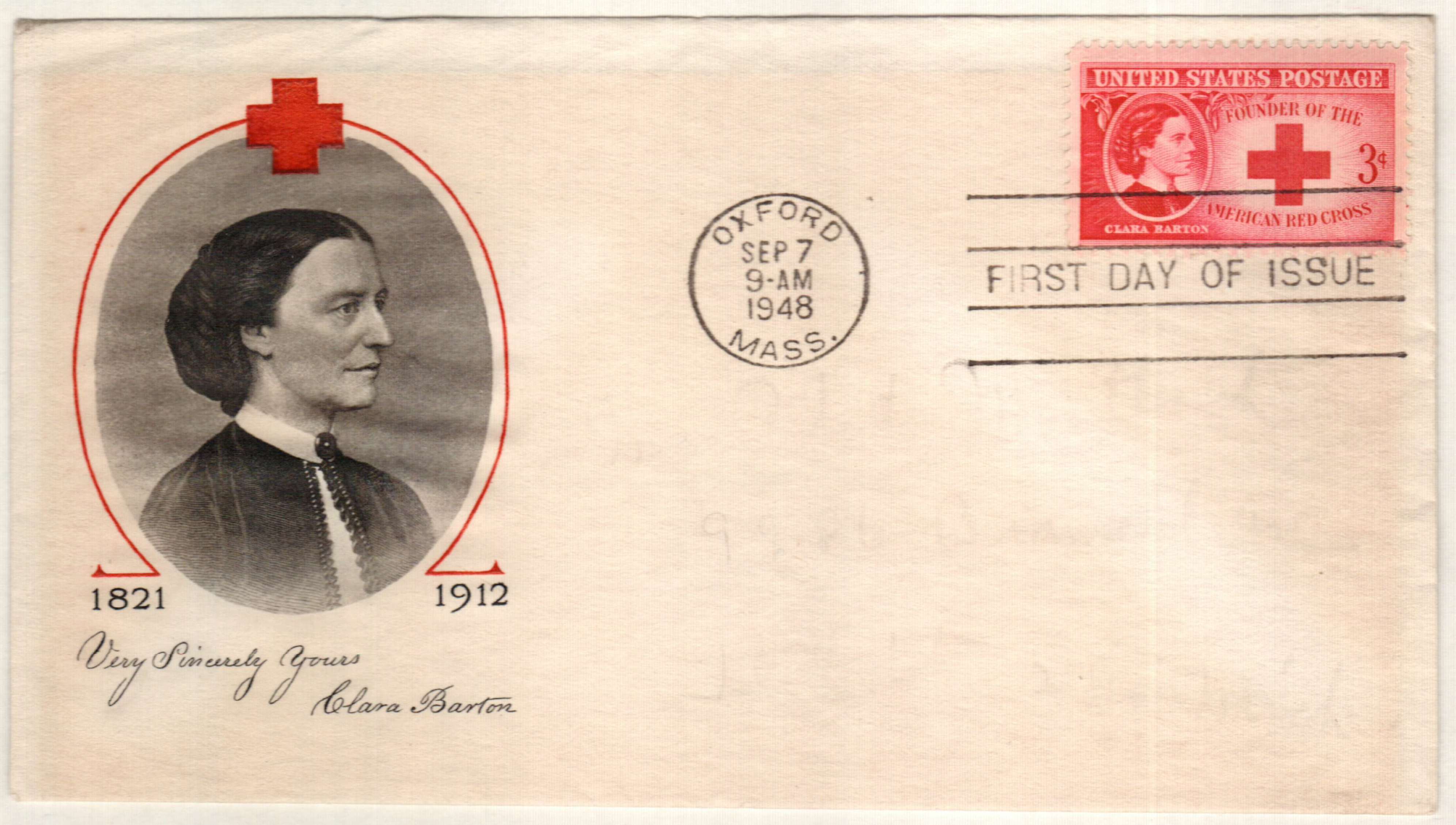
When Barton was 10, he brother fell from the roof of a barn, suffering a major injury. She took it upon herself to nurse him back to health, learning how much medicine to give him and help him make a full recovery, even after the doctors had given up on him.
Barton was severely shy from a young age and her parents took great strides to help her overcome this. The most effective thing was when they convinced her to become a schoolteacher. She earned her certificate when she was 17 and found she greatly enjoyed the profession. She then launched a redistricting campaign to help workers’ children receive an education. This helped her gain confidence to demand equal pay.
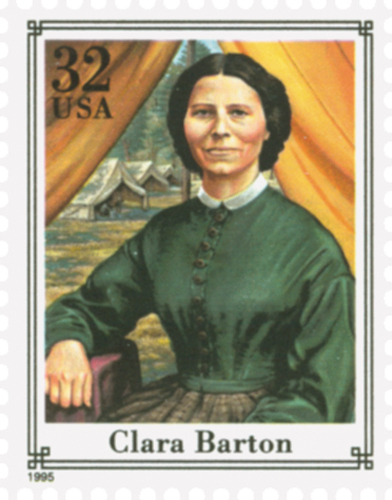
Barton went on to teach for 12 years. After her mother died in 1851, she went to the Clinton Liberal Institute in New York to study writing and languages. Then in 1852 she opened a free school in New Jersey and served as its principal until she was replaced by a man because the school board believed a woman was unfit for the position.
After that, Barton went to work as a clerk in the US Patent Office. She was working there in April 1861 during the Baltimore Riot. New recruits from Massachusetts had been attacked by mobs of Southern sympathizers as they traveled through Baltimore on their way to Washington. When the soldiers arrived in Washington, they had few supplies except the clothes they were wearing.
Barton took supplies to the US Senate chamber, where the wounded were housed, and tended to their needs. She began collecting clothing, food, and other relief supplies and learned how to store and distribute them. She appealed to the public for donations, including advertising in the local papers in her home state of Massachusetts.
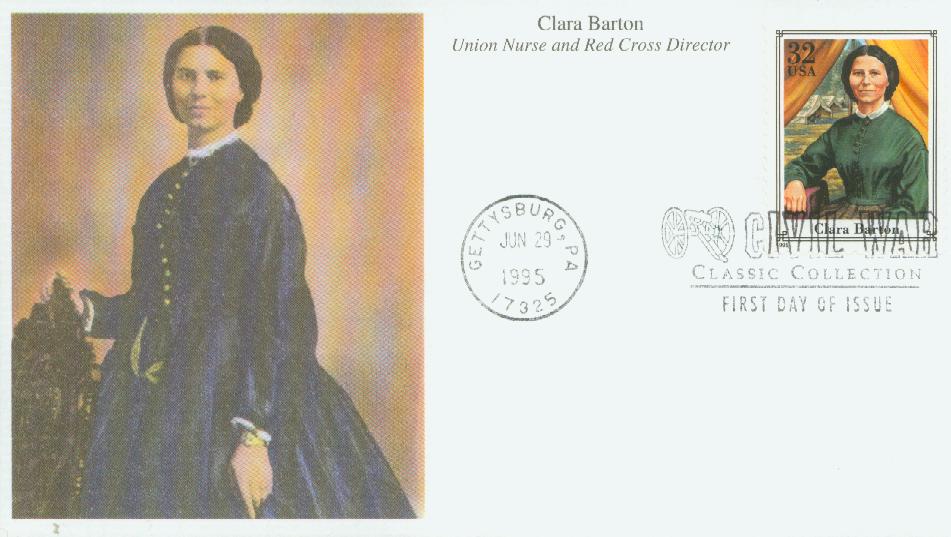
Barton’s efforts were successful and she was given a general pass from US Surgeon General William A. Hammond to travel with the army ambulances “for the purpose of distributing comforts for the sick and wounded, and nursing them.” Her duties included dressing the wounds of soldiers, writing letters for them, reading to them, and praying with them.
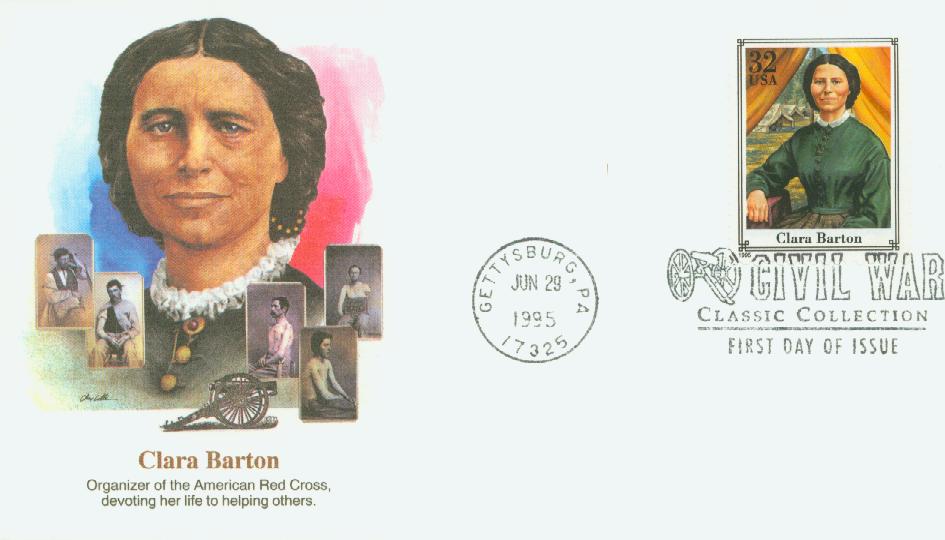
Barton traveled through the night with a wagon full of supplies after the battle of Cedar Mountain in August 1862. The surgeon at the field hospital later wrote, “I thought that night if heaven ever sent out an angel, she must be one – her assistance was so timely.” From that time, Clara Barton became known as the “Angel of the Battlefield.”
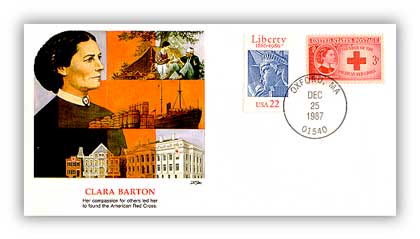
As she got to know the men, Barton gathered information about missing and imprisoned soldiers to report to families. In 1865, President Lincoln put her in charge of the Office of Correspondence with Friends of the Missing Men of the United States Army. She and her assistants identified over 22,000 missing men and created a cemetery for Union soldiers at Andersonville Prison in Georgia.
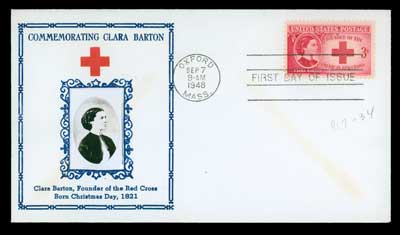
After the Civil War Barton went on to nurse the wounded in other wars. Learning of the International Committee of the Red Cross while serving in the Franco-Prussian Wars, she returned home in 1873 and began an eight-year campaign to establish an American branch of the Red Cross. Seeing the organization into formal existence in 1881, she became its first president – a position she held until 1904. After her retirement she traveled extensively, lecturing on health-related topics. She died from pneumonia on April 12, 1912.
Birth Of Clara Barton

American Red Cross founder Clara Barton was born on December 25, 1821, in North Oxford, Massachusetts.
Barton’s father was a local militiaman who instilled in her a sense of patriotism and human interest. She attended school at the age of three where she excelled in reading and spelling.

When Barton was 10, he brother fell from the roof of a barn, suffering a major injury. She took it upon herself to nurse him back to health, learning how much medicine to give him and help him make a full recovery, even after the doctors had given up on him.
Barton was severely shy from a young age and her parents took great strides to help her overcome this. The most effective thing was when they convinced her to become a schoolteacher. She earned her certificate when she was 17 and found she greatly enjoyed the profession. She then launched a redistricting campaign to help workers’ children receive an education. This helped her gain confidence to demand equal pay.

Barton went on to teach for 12 years. After her mother died in 1851, she went to the Clinton Liberal Institute in New York to study writing and languages. Then in 1852 she opened a free school in New Jersey and served as its principal until she was replaced by a man because the school board believed a woman was unfit for the position.
After that, Barton went to work as a clerk in the US Patent Office. She was working there in April 1861 during the Baltimore Riot. New recruits from Massachusetts had been attacked by mobs of Southern sympathizers as they traveled through Baltimore on their way to Washington. When the soldiers arrived in Washington, they had few supplies except the clothes they were wearing.
Barton took supplies to the US Senate chamber, where the wounded were housed, and tended to their needs. She began collecting clothing, food, and other relief supplies and learned how to store and distribute them. She appealed to the public for donations, including advertising in the local papers in her home state of Massachusetts.

Barton’s efforts were successful and she was given a general pass from US Surgeon General William A. Hammond to travel with the army ambulances “for the purpose of distributing comforts for the sick and wounded, and nursing them.” Her duties included dressing the wounds of soldiers, writing letters for them, reading to them, and praying with them.

Barton traveled through the night with a wagon full of supplies after the battle of Cedar Mountain in August 1862. The surgeon at the field hospital later wrote, “I thought that night if heaven ever sent out an angel, she must be one – her assistance was so timely.” From that time, Clara Barton became known as the “Angel of the Battlefield.”

As she got to know the men, Barton gathered information about missing and imprisoned soldiers to report to families. In 1865, President Lincoln put her in charge of the Office of Correspondence with Friends of the Missing Men of the United States Army. She and her assistants identified over 22,000 missing men and created a cemetery for Union soldiers at Andersonville Prison in Georgia.

After the Civil War Barton went on to nurse the wounded in other wars. Learning of the International Committee of the Red Cross while serving in the Franco-Prussian Wars, she returned home in 1873 and began an eight-year campaign to establish an American branch of the Red Cross. Seeing the organization into formal existence in 1881, she became its first president – a position she held until 1904. After her retirement she traveled extensively, lecturing on health-related topics. She died from pneumonia on April 12, 1912.







